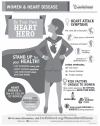Patient Education and Engagement through Social Media
- PMID: 31752656
- PMCID: PMC8226210
- DOI: 10.2174/1573403X15666191120115107
Patient Education and Engagement through Social Media
Abstract
This review addresses the demographics of social media users and their relative health literacy. Means of overcoming health inequities via social media and the role of social media in patient education and engagement are explored. This review discusses forms of appropriate patient engagement, including the pitfalls of social media use.
Keywords: Patient education; consumer health information; health information needs; health literacy.; online health information; social media.
Copyright© Bentham Science Publishers; For any queries, please email at epub@benthamscience.net.
Figures



References
-
- Horrigan J. Home broadband adoption 2009. Pew Research Center; 2009.
-
- Kutner M.G.E., Jin Y., Paulsen C. 2003 http://nces.ed.gov/pubsearch/pubsinfo.asp?pubid=20064832006
Publication types
MeSH terms
LinkOut - more resources
Full Text Sources
Other Literature Sources

